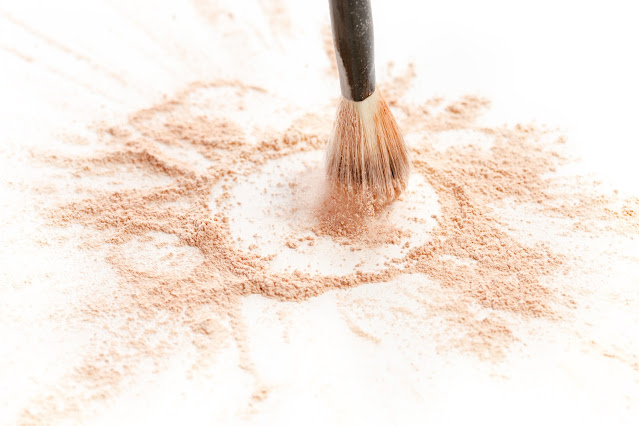Featured
- Get link
- X
- Other Apps
Do's and Don'ts of Setting Powder
Introduction:
Setting powder is an essential step in any makeup routine, as it helps to lock in foundation and concealer, control oil, and prevent makeup from creasing and smudging throughout the day. However, applying setting powder incorrectly can have the opposite effect and leave your skin looking cakey and dull. In this blog post, we will explore in detail the do's and don'ts of setting powder to help you achieve a flawless and long-lasting makeup look.
The Do's of Setting Powder:
- Choose the Right Shade
One of the most critical factors to consider when selecting a setting powder is the shade. The shade of your setting powder should match your skin tone to avoid a white cast or a dull appearance. If you have fair skin, choose a translucent powder, whereas if you have medium to dark skin, opt for a powder that is closer to your skin tone. Choosing the wrong shade of powder can make your skin look unnatural and ruin the rest of your makeup.
- Use a Light Hand
Using a light hand when applying setting powder is crucial to avoid looking cakey or overly made up. Use a fluffy brush to apply the powder lightly and evenly over your face. Do not apply too much powder, as it can look cakey and settle into fine lines and wrinkles. Apply a small amount of powder, then gradually build it up until you get the desired coverage.
- Set Concealer Before Foundation
To prevent your foundation from creasing or settling into fine lines, apply setting powder over your under-eye concealer before applying foundation. The powder will absorb any excess oil and help the concealer stay in place. Use a small brush to apply the powder, and tap off any excess before applying it to your under-eye area.
- Focus on T-Zone
The T-zone (forehead, nose, and chin) tends to get oily throughout the day, so it's essential to apply setting powder to these areas to keep your makeup in place. Use a smaller brush to apply the powder to these areas and blend it outwards towards your hairline and jawline.
- Use a Mattifying Powder for Oily Skin
If you have oily skin, use a mattifying powder to control shine and keep your makeup in place all day. Mattifying powders absorb oil and keep your skin looking matte and smooth. Apply the powder to your T-zone and any other areas that tend to get oily, such as your cheeks and chin.
The Don'ts of Setting Powder:
- Apply Too Much Powder
One of the most common mistakes when applying setting powder is applying too much. Applying too much powder can make your skin look cakey and settle into fine lines and wrinkles, making you appear older than you are. Use a light hand and apply the powder in thin layers until you get the desired coverage.
- Use a Powder with a Shimmer Finish
Using a powder with a shimmer finish may seem like a good idea, but it can make your skin look oily and accentuate fine lines and wrinkles. Shimmer powders reflect light and draw attention to any imperfections on your skin, making them more noticeable. Stick to matte powders for a more natural and flawless finish.
- Apply Powder with a Sponge
Do not apply setting powder with a sponge, as it can make the powder look heavy and cakey. Sponges absorb too much product and can leave your skin looking patchy and uneven. Use a fluffy brush instead, and tap off any excess powder before applying it to your skin.
- Set Makeup Before It Has Dried
Wait for your foundation and concealer to dry before applying setting powder; otherwise, the powder can cling to wet spots on your face and create an uneven finish. Wait for a few minutes after applying foundation and concealer before applying the setting powder. This will allow the products to settle into your skin and give you a smooth and even finish.
- Apply Powder All Over Your Face
While it's essential to set your makeup with powder, avoid applying it all over your face. Applying powder all over your face can make your skin look dull and flat. Instead, focus on the areas that tend to get oily, such as the T-zone. Applying powder to other areas, such as your cheeks and temples, can make your makeup look heavy and unnatural.
- Forget to Blend
Blending is crucial when applying setting powder, as it ensures a seamless finish. Use a fluffy brush to blend the powder into your skin, focusing on the edges to avoid any harsh lines or streaks. Blend the powder outwards towards your hairline and jawline for a natural-looking finish.
Conclusion
Setting powder is an essential step in any makeup routine, but it's important to use it correctly to avoid a cakey or unnatural finish. Remember to choose the right shade, use a light hand, focus on the T-zone, and blend well. Avoid applying too much powder, using a powder with a shimmer finish, applying powder with a sponge, setting makeup before it has dried, applying powder all over your face, and forgetting to blend. By following these do's and don'ts of setting powder, you can achieve a flawless and long-lasting makeup look that will last all day.
- Get link
- X
- Other Apps
Popular Posts

5 Best Concealer Dupes: Affordable Alternatives to High-End Brands
- Get link
- X
- Other Apps

5 Best and Affordable Makeup Setting Powders for Dry Skin
- Get link
- X
- Other Apps

Comments
Post a Comment